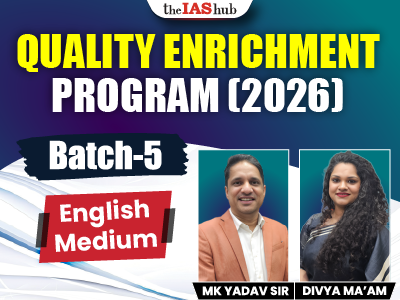Learn everything about the UPSC marking scheme 2025, including UPSC prelims paper marking scheme, UPSC negative marking, CSAT marking scheme, UPSC mains marking scheme, and more. A complete guide to help you crack the UPSC exam!

UPSC marking scheme is the backbone of the Union Public Service Commission (UPSC) Civil Services Examination. It is a systematic way of evaluating candidates’ knowledge, skills, and aptitude across the three stages of the exam: Prelims, Mains, and the Interview.
This article will explain everything you need to know about the UPSC marking scheme, including the UPSC prelims paper marking scheme, UPSC negative marking, CSAT marking scheme, UPSC mains marking scheme, UPSC optional marking scheme, UPSC prelims marks distribution, UPSC mains marks distribution, and UPSC mains total marks. Let’s dive in!
The UPSC marking scheme refers to the system of awarding and deducting marks in the UPSC Civil Services Examination. The exam is conducted in three stages: Prelims, Mains, and the Interview (Personality Test).
Each stage has a different marking pattern, and understanding it is crucial for effective preparation. The UPSC marking scheme ensures fairness and transparency in evaluating candidates’ knowledge, skills, and aptitude.
Understanding the UPSC prelims marks distribution is essential for effective preparation. Here’s a quick summary:
| Paper | General Studies Paper-I (GS) | Civil Services Aptitude Test (CSAT) Paper-II |
| Type of Paper | Objective (Multiple Choice Questions) | Objective (Multiple Choice Questions) |
| Total Marks | 200 | 200 |
| Number of Questions | 100 | 80 |
| Duration | 2 hours | 2 hours |
| Negative Marking | 0.66 marks for each wrong answer | 0.83 marks for each wrong answer |
The Prelims are designed to test candidates’ basic knowledge of current affairs, general studies, and their aptitude. It is essential to note that candidates must clear both papers independently to proceed to the Mains.
The UPSC Mains is a descriptive exam consisting of nine papers. These papers test a candidate’s in-depth knowledge and writing skills. The UPSC mains marks distribution is as follows:
| UPSC Exam Pattern 2025 Mains | |||
| Paper | Name of Paper | Time Duration | Maximum Marks |
| Qualifying Papers | |||
| Paper A | Indian Language | 3 Hours | 300 |
| Paper B | English | 3 Hours | 300 |
| Merit Papers | |||
| Paper I | Essay | 3 Hours | 250 |
| Paper II | General Studies-I | 3 Hours | 250 |
| Paper III | General Studies -II | 3 Hours | 250 |
| Paper IV | General Studies -III | 3 Hours | 250 |
| Paper V | General Studies -IV | 3 Hours | 250 |
| Paper VI | Optional Paper 1 | 3 Hours | 250 |
| Paper VII | Optional Paper 2 | 3 Hours | 250 |
| Total | 1750 Marks | ||
The UPSC Prelims is the first stage of the examination. It consists of two papers: General Studies Paper-I and General Studies Paper-II (CSAT). Both papers are objective-type (multiple-choice questions). Here’s how the UPSC prelims paper marking scheme works:
UPSC negative marking is a critical aspect of the Prelims exam. It is designed to discourage random guessing. If you are unsure about an answer, it is better to leave the question unanswered rather than risk losing marks. Remember, no marks are deducted for unanswered questions.
The CSAT marking scheme is straightforward. Since CSAT is a qualifying paper, you only need to score 66 marks out of 200 (33%) to clear it. However, it is essential to prepare well for CSAT as failing to qualify in this paper will disqualify you from the Mains exam, regardless of your performance in General Studies Paper-I.
The UPSC Mains exam is the second stage and consists of 9 descriptive-type papers. The UPSC mains marking scheme is more detailed and varies for each paper. Here’s a breakdown:
UPSC optional marking scheme is part of the Mains exam. You can choose one optional subject from the list provided by UPSC. Each optional subject has two papers, and each paper carries 250 marks. The optional subject plays a significant role in determining your final score, so choose wisely and prepare thoroughly.
Here are a few tips and advice from the toppers which proved to be game changers in the preparation for the UPSC exam some tips are as follows:
Explore IAS Hub Courses for the upcoming UPSC Prelims 2025 and Mains Exam.
| Related Articles | |
| UPSC Exam | UPSC Application Form |
| UPSC Exam Pattern | UPSC OTR 2025 |
Yes, UPSC negative marking applies in Prelims. For every incorrect answer, 1/3rd of the marks are deducted.
You need to score at least 66 marks out of 200 (33%) to qualify in the CSAT paper.
The UPSC mains total marks are 1750 for merit papers, and the Interview carries 275 marks, making it 2025 marks in total.
The UPSC mains marks distribution includes Essay (250 marks), General Studies (1000 marks), Optional Subject (500 marks), and Interview (275 marks).


Refine your answer writing skills and elevate your UPSC preparation with personalized support and expert feedback.
Fill out the form to get started with the program or any other enquiries !








Are you dreaming of becoming an IAS officer? Then, IAShub can be your best guide. It is one of the Best IAS Coaching in Delhi. Many students who want to clear the UPSC exam join IAShub for learning. The institute gives both online and offline classes. Their teachers are experienced and helpful. They easily explain every topic. Students also get notes, tests, and tips to do well in the exam.
IAShub is in Delhi and is trusted by many UPSC students. It offers coaching for every part of the UPSC exam – Prelims, Mains, and Interview. The classes are simple and easy to understand. The teachers are experts and guide students in the right way. IAShub is also known for its helpful notes, test series, and answer-writing practice. IAShub is the best coaching in Delhi and also gives UPSC Online Classes. This helps students from any place in India to learn. The online classes are live and also recorded. So, students can watch them anytime. These classes cover the full UPSC syllabus.
Here are some important services provided by IAShub:
The UPSC Civil Services Exam has three parts:
This exam is tough, but with the right guidance, it becomes easy to manage. Students must study smart and stay regular.
IAShub supports students from the beginning to the end. It gives the right books, tests, and notes. The classes are easy to follow, and the teachers are always ready to help. Students get personal doubt sessions too. The test series and answer checking help students learn where they need to do better. Also, free study materials save time and money.
IAShub also guides students during the final stage – the interview. Experts take mock interviews and give useful tips. This full support makes IAShub one of the best IAS coaching in Delhi.
